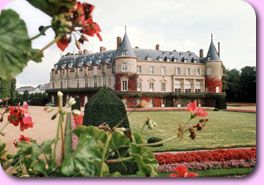|
Q1 What is the G8 Summit?
|
 |
|
A1 The word "summit," because of its meaning of "the very top of a mountain," has come to mean a meeting between the very top people--the presidents, prime ministers, and other leaders of different countries. The G8 Summit is a meeting held each year among the leaders of eight major countries, along with the president of the European Commission, who represents the European Union (EU) as a whole. The G8 Summit features not only a meeting among these leaders but also between the ministers from each country in charge of foreign affairs and finance.
|
|
Q2 What does G8 stand for?
|
 |
|
A2 G8 stands for the "Group of Eight," a collection of eight major countries: Japan, France, the United States, the United Kingdom, Germany, Italy, Canada, and Russia.
|
|
|
|
Q3 How is a summit different from other international meetings?
|
 |
|
A3 At a summit meeting, leaders of the major countries get together to talk about economic, social, and other important issues. They then gather the results of their talks together in a report called a communique, which they broadcast to the world. Unlike many other meetings, the participants in a summit are all leaders of their nations, so they have the ability to tackle and solve big problems that go beyond a single country's borders.
|
|
Q4 How do people prepare for a summit?
|
 |
A4 Preparations for the G8 Summit are carried out by "sherpas," assistants working under the leaders from each country. This word comes from the Sherpa people of Nepal who guide people to the top of the Himalayan Mountains. As their name suggests, these sherpas have the task of guiding their leaders to the peak of the mountain--to the summit, in other words.
Sherpas begin their work preparing for the summit, meeting and staying in touch with one another, about a year before the actual meeting takes place. The sherpa for the Japanese prime minister at the Kyushu-Okinawa Summit is an official from the Ministry of Foreign Affairs, the deputy minister.
|
|
Q5 What does Japan have to do as chair of the 2000 summit?
|
 |
A5 Each year one country serves as the chair of the Group of Eight from January through December, and that country has the job of hosting the G8 Summit for that year. The chair country has to take care of preparations for the summit meetings, keep the meetings themselves running smoothly, and even set up additional gatherings in case the global situation calls for them.
Japan is the G8 chair country for 2000. It previously served as chair in 1979, 1986, and 1993, making this year its fourth time to fill the spot.
|

|
Q6 How did the summits first get started?
|
 |
A6 Early in the 1970s U.S. President Richard Nixon announced that he would take the U.S. dollar off the gold standard. This meant that the dollar, which until then was fixed at the value of a certain amount of gold, could move up and down in value against gold--and against other countries' currencies.
Later in that decade, the dangerous situation in the Middle East caused the price of oil to rise rapidly. Countries around the world that were buying their oil from the Arab nations saw the price of energy become very high, and they were faced with the tough problem of how to deal with that high cost.
Events like these got the major nations of the world thinking that they should get together to talk over the economic problems that they all faced. The president of France, Valery Giscard d'Estaing, invited the leaders of five other countries to come to Rambouillet, a place near Paris. Japan, France, the United States, the United Kingdom, Germany, and Italy took part in the first summit, where they agreed to cooperate to deal with the economic problems of the time.
|
|
Q7 How are countries chosen to participate in the summit?
|
 |
A7 Six countries--Japan, France, the United States, the United Kingdom, Germany, and Italy--took part in the first summit, which was held in Rambouillet, France, in 1975. The next year, when the United States hosted the gathering in Puerto Rico, Canada also participated. And a year later, in the United Kingdom, those seven nations were joined in London by a representative from the European Commission, an organization that handled various duties for the European Community (today the European Union, or EU).
Beginning in 1991, when the meeting was again held in London, the president of Russia began attending the annual gathering--not to take part in the summit itself, but to talk with the other leaders outside of the actual meetings. In Naples, Italy (1994) the Russian president joined in the real political discussions, and beginning with the Denver summit hosted by the United States in 1997 Russia became an official participant in all but a small portion of the summit meetings.
|
|
Q8 Why are summits held every year?
|
 |
|
A8 Following the first summit, held in 1975 in Rambouillet, France, the participating countries agreed that the gathering was an important and valuable meeting. They decided to hold a similar summit every year thereafter.
|
|
Q9 What was accomplished at summits in the past?
|
 |
A9 At the time of the first summit, held in 1975 in Rambouillet, France, people around the world were seeing the price of things they needed to buy go up very quickly. At the same time, unemployment--not enough jobs for everyone who wants to work--was becoming a serious problem. The countries that gathered at the first summit agreed to cooperate to get the world's economy back on track.
Later on, after the end of the cold war between the United States and the Soviet Union, the nations taking part in the summits began dealing with political and social problems in regions around the world.
|
|
Q10 Where are Kyushu and Okinawa?
|
 |
A10 Japan is a country made up of four main islands: Hokkaido, Honshu, Shikoku, and Kyushu. Kyushu is the westernmost of these islands and is divided into seven prefectures. Fukuoka Prefecture will be the site of the meeting of finance ministers, while Miyazaki Prefecture will host the gathering of foreign ministers.
Okinawa Prefecture is a group of small islands at the far southwest tip of Japan. Okinawa covers half of the Nansei Island chain, which stretches from near Kyushu in the northeast to Yonaguni Island near Taiwan in the southwest, covering an arc of some 1,200 kilometers.
|
|
Q11 Why were Kyushu and Okinawa chosen to host the meetings?
|
 |
|
A11 Former Prime Minister Keizo Obuchi considered a number of prefectures that were seeking to host the 2000 G8 Summit. In the end he chose Okinawa and the prefectures of Miyazaki and Fukuoka on Kyushu, which had been especially eager to have the meetings. Okinawa and Kyushu have a long history of trade and exchange with other areas in Asia.
|
|
Q12 Where in Okinawa will the G8 Summit be held?
|
 |
|
A12 The summit meeting of the leaders of eight major countries will be held in the city of Nago, the main city of the northern half of Okinawa Island. Nago is a waterfront city with views of three bodies of water: Nago Bay, the Haneji Sea, and the Pacific Ocean.
|
 |
 |
|
Q13 What will be discussed at the Kyushu-Okinawa Summit?
|
 |
|
A13 Each year summit participants discuss matters in three categories: First, issues that were covered at past summits and assignments left over from those previous gatherings; second, urgent topics needing attention, such as the global economy or dangerous situations in areas around the world; and third, issues brought up by the chair nation for discussion that year. In this third category, former Prime Minister Keizo Obuchi announced a number of main topics at the end of February, including (1) how to narrow the gap between the industrialized countries and nations that are still developing in information technologies (IT) like computers, (2) how to provide support for the countries being left behind as a result of globalization--a force creating similar economic and social systems all over the world, (3) how to deal with infectious diseases like AIDS and tuberculosis, and (4) how to respect the different cultures of each country around the world.
|
|
Q14 Who will participate in the Kyushu-Okinawa Summit?
|
 |
|
A14 Leaders from eight major countries--Japan, France, the United States, the United Kingdom, Germany, Italy, Canada, and Russia--will take part in the G8 Summit meeting held in Okinawa. They will also be joined by the head of the European Commission, who represents the European Union (EU). Meanwhile, government officials in charge of foreign affairs--foreign ministers and secretaries of state, for instance--will gather in Miyazaki, and officials in charge of financial affairs--for example, ministers of finance--will get together in Fukuoka.
|
|
Q15 What languages will the leaders speak at the meetings?
|
 |
|
A15 At the summit meetings held to date, the leaders have spoken in their own languages, and their statements have been translated on the spot by interpreters into the languages of all the other participants. This should also be the case this year.
|
|





